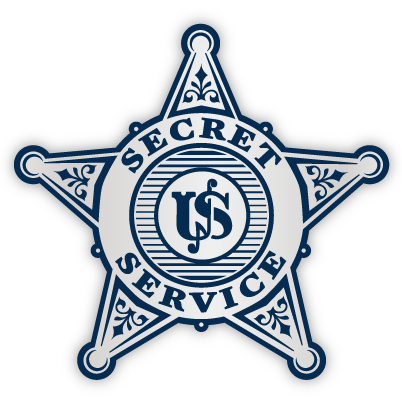"We support the protective and investigative missions of the Secret Service by providing forensic laboratory support, including fingerprint and questioned documents examinations," she said.
Lewis said examiners in the lab use forensic science to help investigators determine if things like social security cards, driver’s licenses, credit cards or other important documents are fraudulent or genuine.
The team can use handwriting and printing defect analysis to help with that, for instance, and even look at the inks used in a document's creation to see if it's been doctored. Helping with that is the FSD's International Ink Library, Lewis said, which includes more than 12,000 samples.
"It's the largest collection of writing inks in the world," she said. "Those can be used to determine whether a document was written when purported to be written or try to determine the type of ink used to write the document."
Lewis said the FSD also maintains a "National Inkjet Library," with more than 500 examples of inkjet inks. Inkjet printers, she said, are increasingly used in the production of counterfeit currency. Putting a stop to that, she said, has been part of the Secret Service's mission since it was created back in 1865.
Lewis said the FSD also relies on a tool they call "FISH," short for Forensic Information System for Handwriting. That resource catalogs more than 14,000 samples of threatening letters the Secret
Service has gathered going back to 1991 and provides technicians a wide array of handwriting samples against which new documents can be compared.
The FSD is also heavily involved in the Secret Service mission to locate and remove ATM and gas pump skimmers, Lewis said, and to help investigators identify the criminals who installed those devices attempting to steal credit card information.
"We're getting those for fingerprints and then we are also collecting for DNA," she said.
Jeff Clemente, the visual arts manager within FSD, oversees the visual information branches there. His team of more than 30 technicians are involved in, among other things, forensic photography, video and audio enhancements, speaker identification, crime scene video, composite illustrations and crime scene diagraming.
One role Clemente's team, he said, is to help the Office of Protective Operations prepare for their missions.
"We build 3D models of protective sites," he said. "They're highly accurate and they can be used for briefings and for gaming. We can put them in a game engine and people can do training to prepare for missions at the White House or the United Nations, for instance."
Tools such as laser scanners, Clemente said, make building those 3D models highly accurate.
Clemente also said his team is involved in both image and audio enhancement to help investigators both inside and outside of Secret Service make better use of the evidence they gather from a crime scene. Video or imagery from ATMs, security cameras, and cell phones, for instance, is sometimes not the best quality. It's the role of the visual information team to make that information useful to investigators.
"Sometimes imagery is distorted in some way," Clemente said. "It's too dark, or it's blurry because the camera moved."
He said the team recently helped local law enforcement in a case where the victim of a hit and run was able to shoot a cell phone photo of the perpetrator's car. But that image was not the best quality, he said.
"The picture was blurry, it was through the windshield and the person was moving quickly," Clemente said. "Investigators sent the image to us, and through correction using software we have
here, we kind of cleaned it up and deblurred it to see what that license plate looked like. We got a good image of it and we were able to help investigators pursue the bad guy."
When it comes to just sound, Clemente said, his team can take an audio file that's of poor quality and make it usable for investigators.
"Maybe we get a threat call or a recording that comes in, a 911 call, and investigators want to hear what's going on in the background," Clemente said. "Maybe somebody is conversing in the background. We can quiet down the near speaker and bring out the far speaker. Or if law enforcement is wearing a wire in a hotel and the wire is hooked up incorrectly, or there is a fountain in a hotel lobby and there is a lot of noise and reverb -- there are tools to clean that up and give it back to the investigator."
The Secret Service's FSD isn't involved in every case that investigators are running, Lewis said. But the division exists to provide those investigators the tools they need to go the extra mile.
"The investigators work really hard to research their cases and make connections and solve crimes," Lewis said. "We're a tool in the larger puzzle. We're here to offer timely and appropriate services to help them get their cases done faster."
When cases are solved using the assistance of the FSD, Clemente said, his team feels the pride of having contributed what was needed to get the win.
-- United States Secret Service

